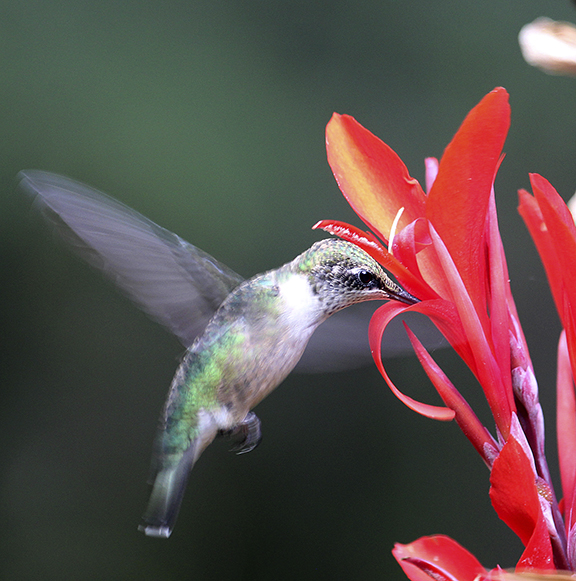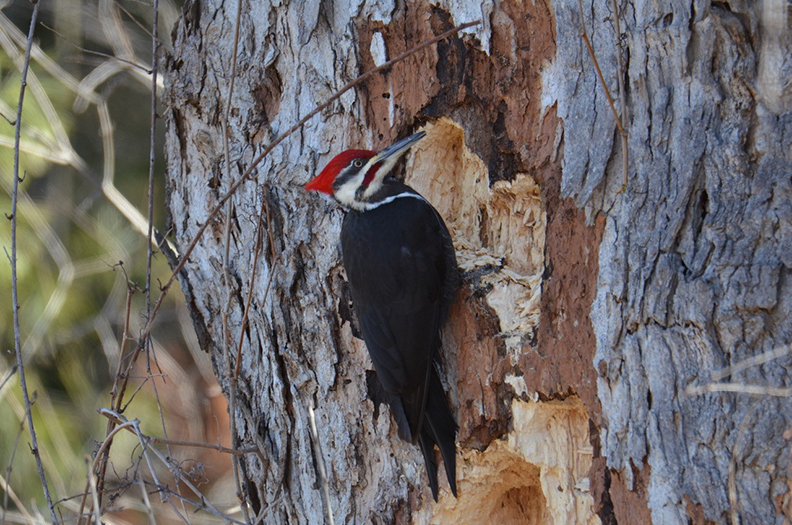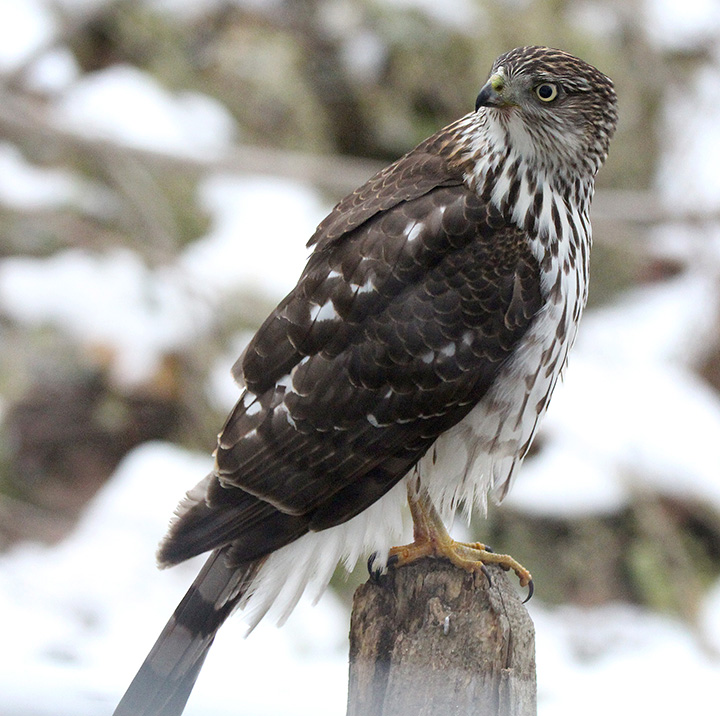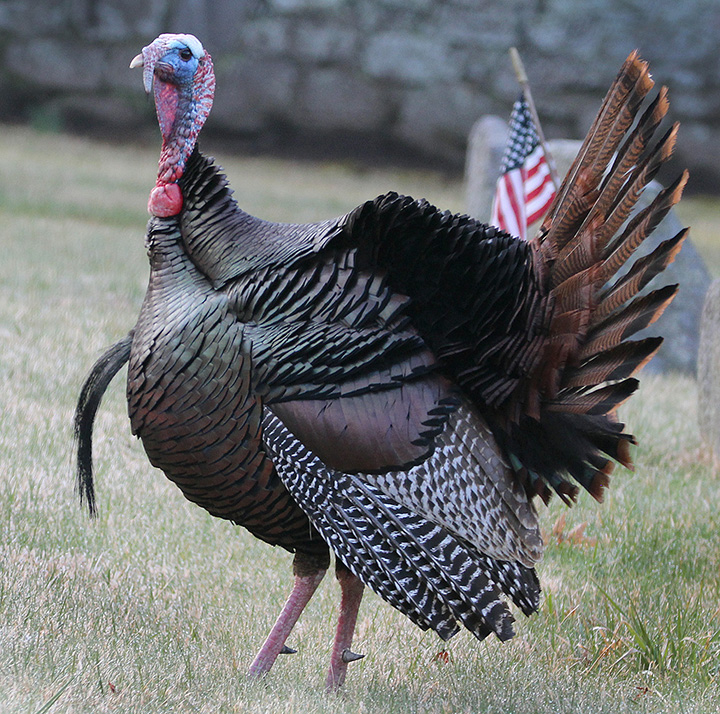More On Hummingbirds

PHOTO: A ruby-throated hummingbird visits a canna lily bloom in New England. Photo by Chris Bosak

by Chris Bosak
Weirs Times Columnist
Hummingbirds are always a good conversation starter, especially in that time of year after the bird breeding season, but before fall migration begins. My last few columns on hummingbirds elicited a few responses from readers I’d like to share.
Similar to my “problem,” Mary Ellen from Keene has a territorial female hummingbird that keeps all other would-be visitors away. The feistiness of New England hummingbirds, however, pales in comparison to the rufous hummingbirds she observed at her daughter’s property in Colorado at 9,200 feet of elevation.
“This one bird kept all other hummers from feeding. I put up another feeder thinking that would solve the problem but instead of one territorial rufous, we ended up with two!” she wrote.
Mary Ellen did some research and discovered the migration route of the rufous hummingbird takes them over the Rocky Mountains when alpine flowers are in bloom. Sure enough, she wrote, the aggressive rufous hummingbirds left after two weeks and the other hummingbirds were free to enjoy the feeders again.
Mary Ellen also marveled at how far these tiny birds can fly during migration. Ruby-throated hummingbirds are the only hummingbird species that is regularly found east of the Mississippi River. They get to their territory, including New England, by flying nonstop over the Gulf of Mexico, a 500-mile journey that takes about 20 hours. Some hummingbirds, if they are lucky enough to find one, will stop and rest on a boat or oil rig.
Deb from Royalston, Massachusetts, said her six to 12 hummingbirds visit mostly at dawn and dusk.
Zaden commented on my website that: “In Japanese, they call them hachi-dori, ‘bee birds.” I love that word.”
Eunice wrote on my website: “I have three feeders and 30 healthy hummers here in N.H. but hundreds of flowers for them to enjoy. Yes, my visitors hop from one feeder to another, but they all get to feed. Many are babies. It was a good year for them.”
Don and Heidi Nowers from Westminster, Vermont, thought the rose of Sharon bush and nearby feeder would be enough to keep all of the hummingbirds content. Not so. “It appears that after the dominant hummer chases the little guys off, a couple of bees move onto the feeder. When Ruby comes back, it’s game on.” They wrote that the bees and bird chase each other and play a game of cat and mouse. They did once observe a bee and hummingbird sharing the feeder, proving there is enough to go around.
My house in the woods had a lot of rose of Sharon bushes growing wildly and the hummingbirds loved it. There are lists upon lists of the types of flowers hummingbirds are attracted to. I’ve found that hummingbirds will visit just about any bloom to see if it is a potential food source. Sure, they may prefer red, tubular blooms, but they’ll come to just about any flower, I have found.
Deborah from Fitzwilliam had similar thoughts about sharing the wealth when she purchased a second hummingbird feeder. Alas, instead of the birds sharing, Deborah is “still entertained by hummer wars.” Deborah also noted “that the hummingbirds’ warning of flying in an arch while it chirps is similar to a bumblebee’s warning?” I hadn’t noticed that before but will pay attention next time I see bumblebees acting territorially.
Thank you to all who wrote in and shared your stories. Let’s keep the conversation about nature going.
Chris Bosak may be reached at chrisbosak26@gmail.com or through his website www.birdsofnewengland.com



